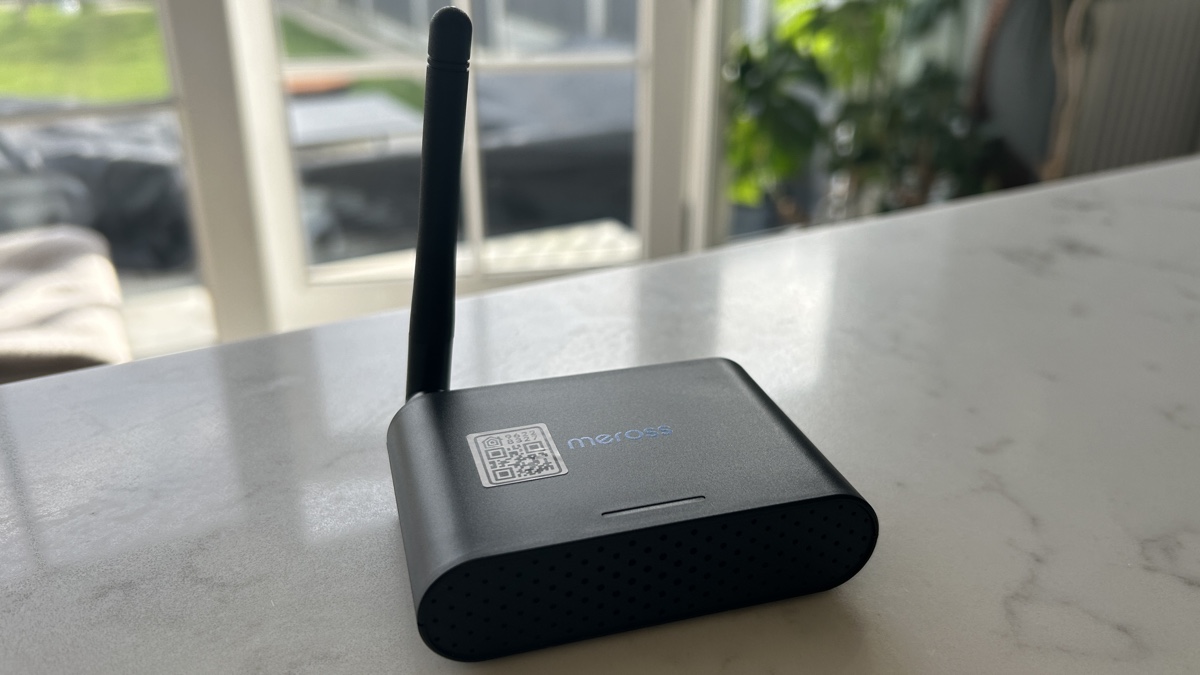
Budget opener that works with all the major smart home systems
The Meross Smart Wi-Fi Garage Door Opener (MSG200) is a super cheap and relatively easy option for making your existing dumb garage door controller smart. It works with hundreds of existing garage controllers, even really old ones, and ties them into your smart home ecosystem of choice, whether that be HomeKit, Alexa, Google Home or SmartThings. There’s a lot of wires to deal with and everything looks a bit retro but, given it’s going to reside in your garage, that’s not really a reason not to invest.
-
Works with over 1,600 garage door controllers -
Budget price-tag -
Works with Alexa, Google, HomeKit and SmartThings -
Easy to install
-
Lots of messy wires -
Weird HomeKit notifications -
Initial set up instructions are confusing
Meross Smart Wi-Fi Garage Door Opener (MSG200HK): Introduction
- Compatible with Alexa, Google Home, HomeKit and SmartThings
- Works with thousands of different garage door openers
- Uses 2.4GHz Wi-Fi
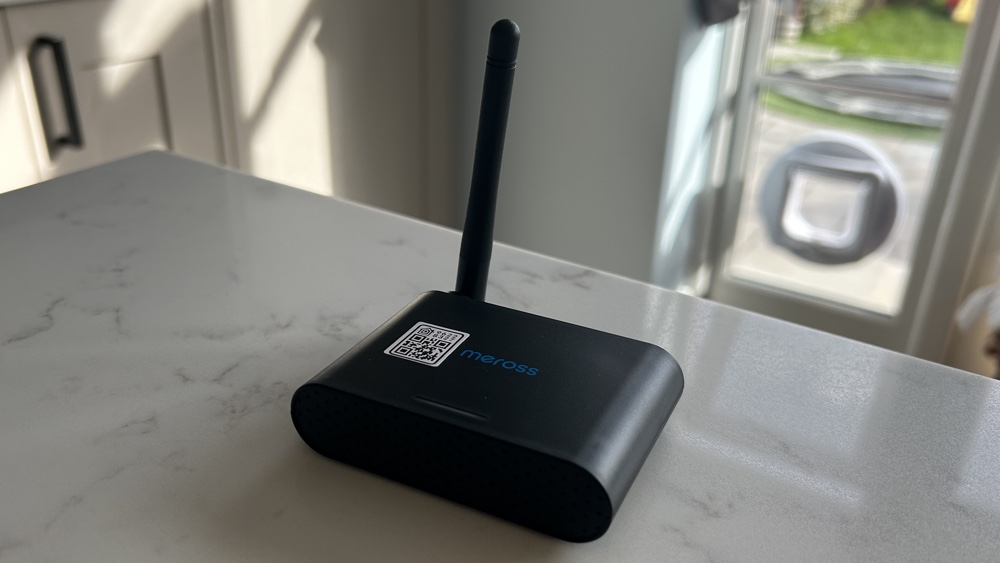

Ever since the Chamberlain Group started killing off HomeKit, Alexa and Google Assistant access to the MyQ ecosystem, and then made the decision to prevent third-party apps using the APIs thus nuking the likes of Home Assistant, I’ve been on the lookout for a gadget to make my garage door a little smarter.
Step forward the Meross MSG200HK, a sub-$70 smart garage door opener that plays nicely with all the major smart home systems.
The Meross MSG200HK, also referred to as the Meross Collie, is compatible more than 200 garage door brands, and can be installed on over 1,600 different models.
I’ve installed it on a fairly-recent Chamberlain Liftmaster Evolution LM80EVF, but the Chinese brand tells us it will even work with ancient garage openers from the 1990s.
So it’s cheap and it’s widely compatible, but is it any good?
Read my Meross Smart Wi-Fi Garage Door Opener MSG200HK review to find out.
Design and components
- Can control 3 different garage doors
- Powered by Micro-USB
- Open and closed sensor included
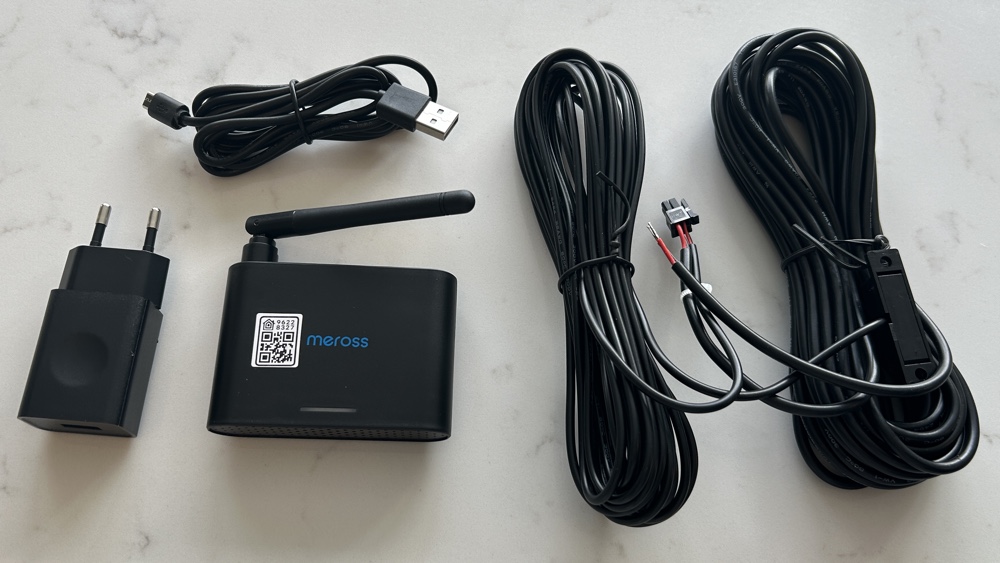

I mentioned in the intro that, at less than £70 / $70, the MSG200HK is a cut-price smart garage door opener but Meross does actually have a couple of cheaper options.
There’s actually a non-HK MSG200 and, you guessed it, that means no HomeKit; but you still get Google Assistant, Alexa and SmartThings control. That’ll cost you around $40.
The MSG100 model actually comes in at less than $30, or just under $40 if you need HomeKit access.
However, the MSG200HK is the most complete model from the Chengdu-based smart home specialist. Not only does it support all the major platforms but a single device can actually control three different garage doors.
It also boasts an external antenna, which the MSG100 models do not have, so it can better receive those 2.4GHz Wi-Fi signals.
It actually looks like a mini Wi-Fi router from the early 2000s, so not exactly an attractive device but, given it will be living in you garage and not your living room, that’s not really an issue.
As mentioned, the MSG200HK is capable of controlling three garage doors. In the box you actually get wires to do two doors though, not three – it’s around $15 / £10 for the extra wire if you do need to get that third door control set up.
The wires simply slot into the ports on the back of the device. Also on the back is the Micro-USB port for powering the device. You’ll get a power block in the box but I’ve had no issues having the Meross powered via a direct USB-A port on a gang plug in my garage.
The first thing you need to do before buying, let alone installing, the Meross MSG200HK is to make sure your garage door opener is compatible. You can do this using the Meross online portal but the Meross app will also make sure it knows what model you’re trying to install with during the setup step.
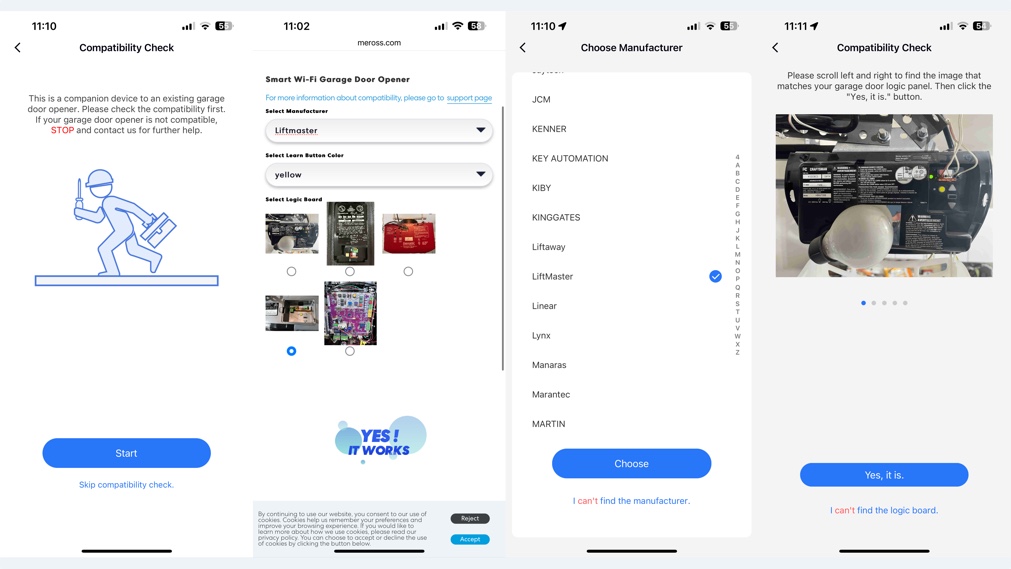

Both methods talk you through checking compatibility using handy images and you’ll be pretty confident that your existing opener is supported (or not) following this process.
Once you are sure you’re ready to go ahead, the app talks you through all of the necessary steps. The app itself is pretty useful but it does get a bit confused half way through where, once you have paired the device itself, it then talks you through some bits you’ve already done.
The paper manual in the box also slightly contradicts what the app says but, despite these slightly confusing mixed messages, it’s actually super easy to get the MSG200HK up and running.
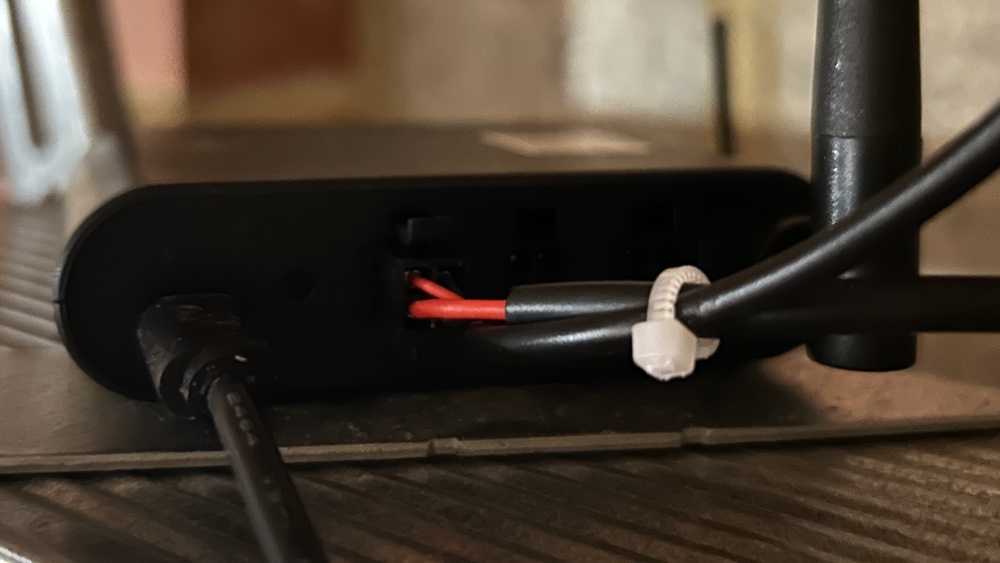

Out of the router-like Meross MSG200HK unit itself comes two wires; the first connects to your existing garage door opener, as per the installation instructions, and the second terminates with one half of the open/closed sensor.
In my case, it was just a case of inserting the wires into the 1 and 2 slots on my Liftmaster and I was assured by the app that I didn’t need to worry about what wire went in what slot.
These wires obviously give the message to your existing opener to carry out an open or close action, based on the ‘router’ receiving a command.
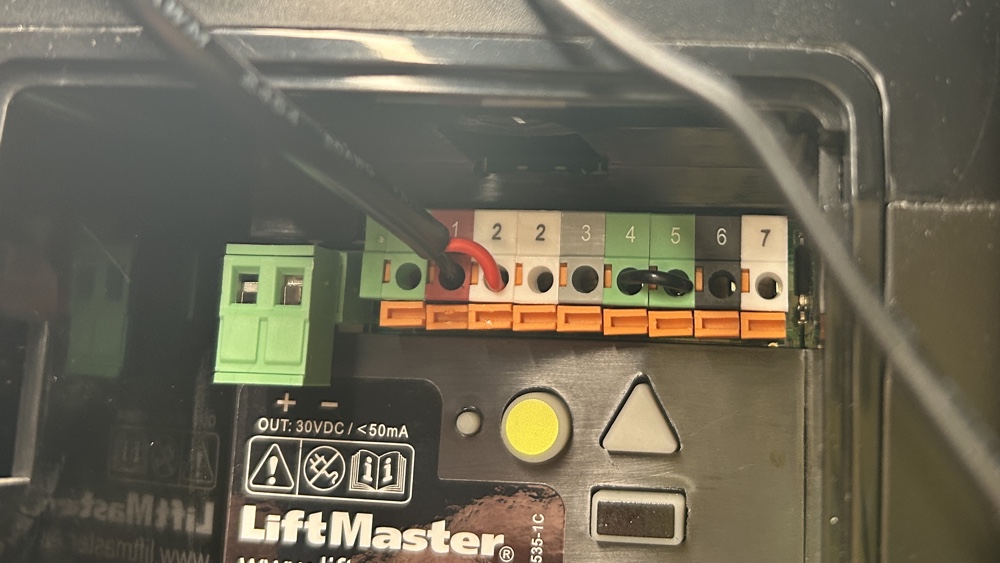

You may have to get a bit creative with your wire hiding; but it’s just a garage at the end of the day, no one is seeking prizes for neatness.
The good news is that these wires are super long, around 5m each, so you should have no issues getting your unit wired up to your existing opener and in a place you want it to live, and also have the open/close sensor on the by where the garage door closes.
On the back of my existing garage door opener, I had a little door panel to hide the wires and buttons. But I couldn’t put this back in place with the additional Meross wires, so I had to get the drill out to make a little hole:
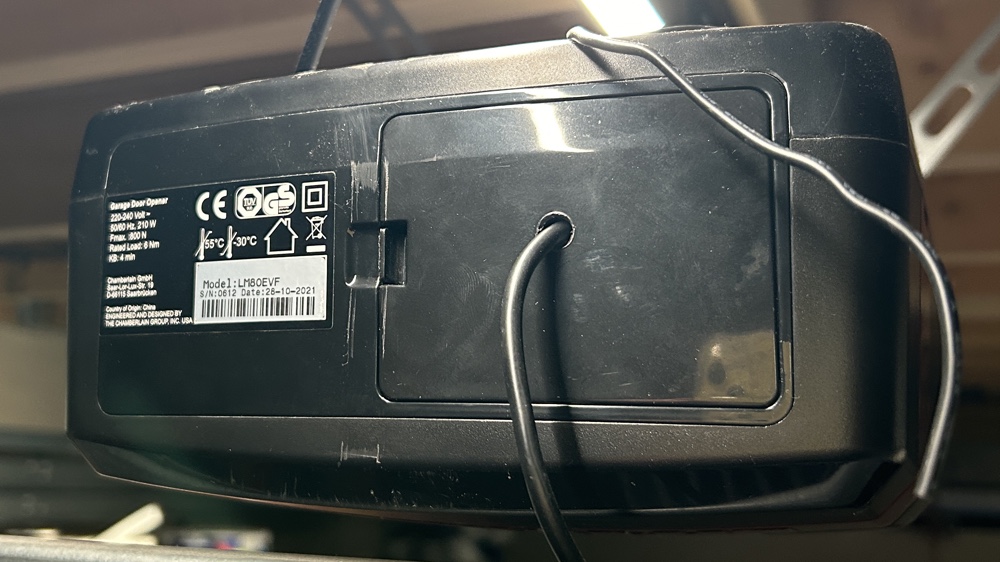

During the installation process, it actually asks you how many of the ports you want to activate. I just chose one as I just have a single garage door.
However, I found that by the time I had completed the installation process, all three ports were active.
It actually adds the device to HomeKit as a bridge and then adds three separate garage door ‘devices’. The good news is that, once you go into the Meross app and deactivate the unneeded ports, it ‘deletes’ the additional ‘devices’.
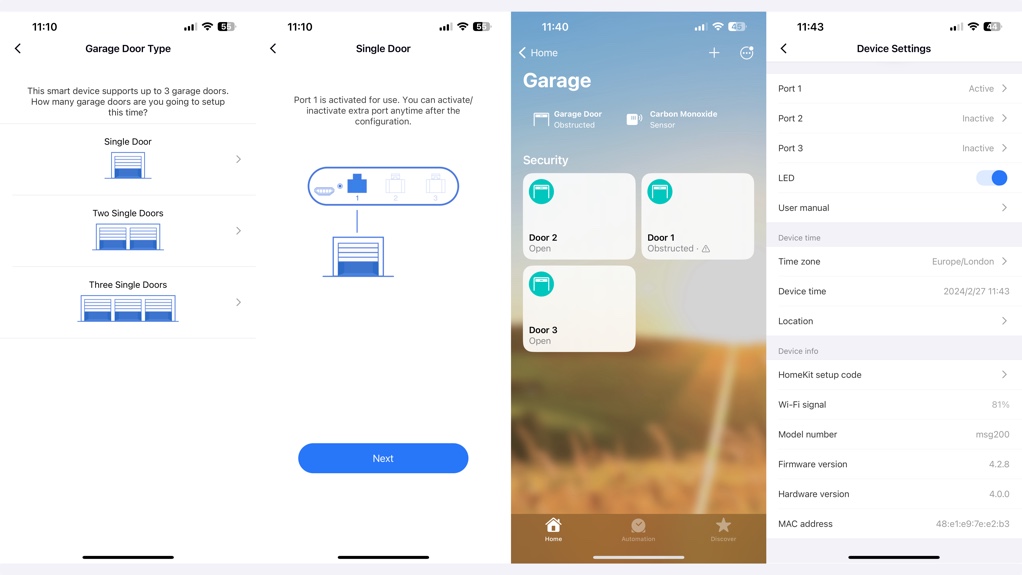

These deletions are also synced with the likes of HomeKit and Alexa, so you won’t clutter up your device list with unneeded devices.
The open and close sensor is a little bit of a faff to install, purely as it’s a wired device so you’re going to have to snake and secure the long wire towards your door.
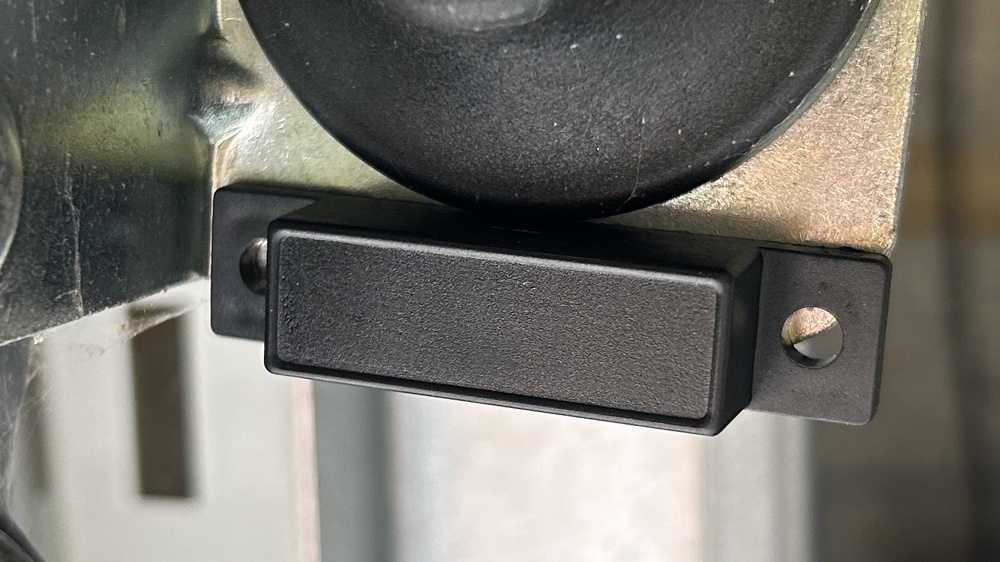

Once you’ve got it in place though, it works well – it’s purely a magnetic sensor to provide a live status to the connected apps and platforms.
The sensor is just for status. It doesn’t determine when the garage door is closed; the original settings from your installer are kept.
In use
- Old open/close methods will still work
- Voice, app and Watch options all available
- Multiple security features
Once you’re all up and running, your normal garage open methods – think keyfobs, wall panels and the like – will all still work; the MSG200HK doesn’t work on their frequency.
Instead, the process is that the router-esque device receives a Wi-Fi signal – whether that’s from a voice command, a tap of a button in an app, a time-specific routine, and so on – and relays that message to your old garage door opener over that wire you’ve stuck in the back.
That’s basically how it makes a dumb thing smart.
Depending on what smart home system(s) you use, you’ll have a few different options for controlling your connected garage door.
I set up the MSG200HK through HomeKit but, because I already use Meross devices (such as the excellent Meross Smart Wi-Fi Plug Mini) with Alexa, it synced into Amazon’s smart home system for me too.
What that meant was that I had numerous ways to control the opening and closing of the garage door – including voice control with Siri or Alexa; with security measures such as pin codes or Face ID needed to open, for obvious security reasons.
But it also meant that I was getting notifications left, right and center regarding the open/close status of the door. That’s not Meross’ fault, but I did have to jump into the relevant apps to determine what notifications I wanted exactly.
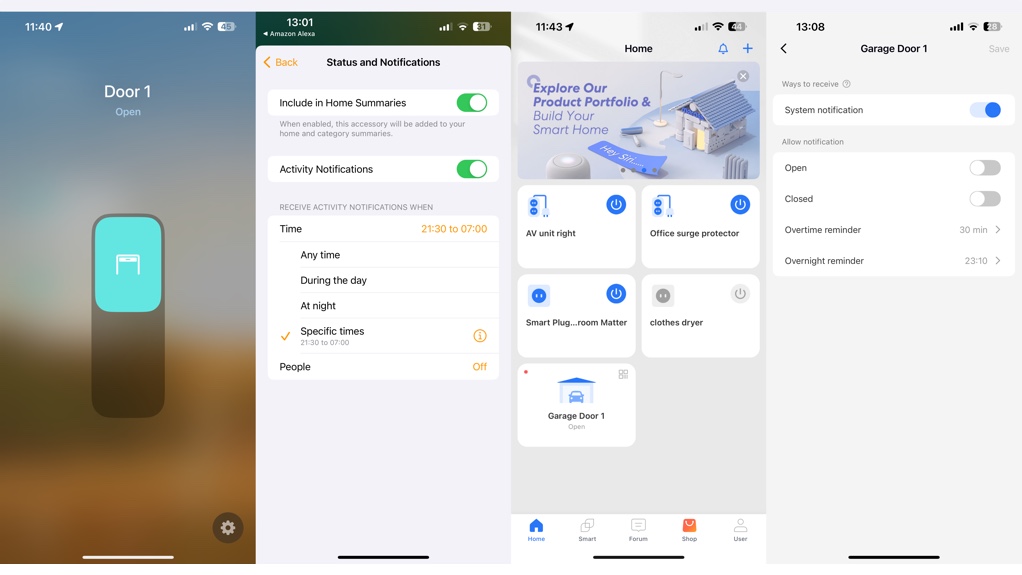

I found HomeKit was the best for letting me know about the garage door being left open overnight, but I also used the native Meross app to alert me if the garage door was left open, at anytime of day, for more than 30 minutes. In the app, Meross calls this warning the ‘Overtime’ reminder.
The MSG200HK also syncs up with Apple CarPlay, giving you a handy tile on your car’s dashboard so you can easily open and close your garage door from inside your vehicle.
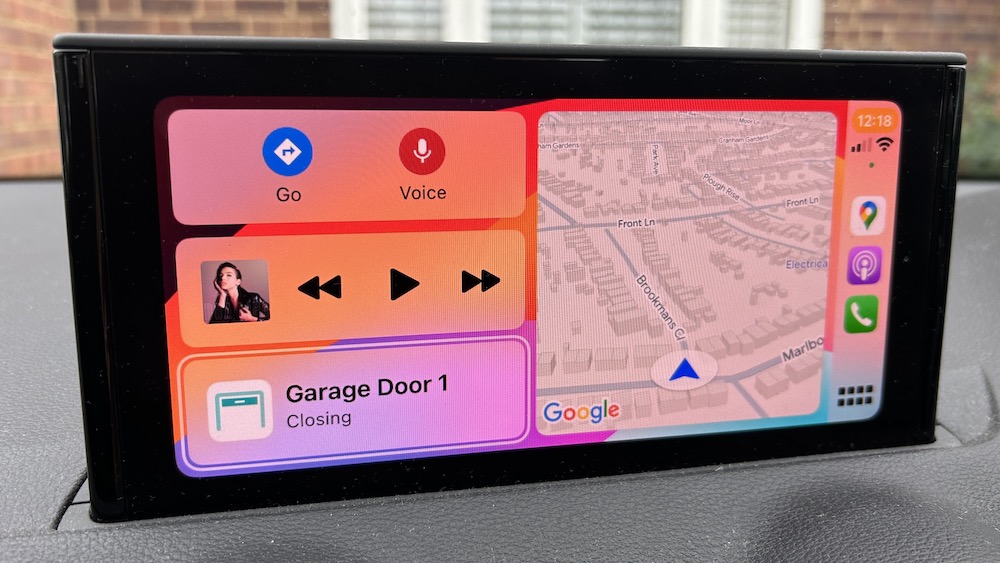

The addition of the MSG200HK to my garage door has also meant that I can leave my house keys at home entirely as the connecting door between my garage and utility room has a Yale Conexis L2 smart lock installed, so I’m able to open both doors using my phone.
Or, indeed, my Apple Watch… meaning I don’t have to even take my phone out with me, should I go running. On the Apple Watch Meross app, you have to manually select to sync the MSG200HK to the Watch from the iPhone app.
The system isn’t without its quirks. One issue I have is that my Apple Home status often says ‘Obstructed’ when it’s closed; I think this is when I’ve manually closed the garage door using an old keyfob after initially opening via HomeKit.
Another problem is that the Meross app kept telling me that it was having trouble closing the door, when it wasn’t – the door was closing fine.
I found tinkering with the open/close door timings sorted this. As mentioned, the open/close sensor is purely used for a status so it doesn’t stop or start the garage door opener motor, so it needs to learn how long your door takes to open and shut.
In the Meross app you’ll be able to play around with a number of settings, like having the door automatically close at certain times and you can also set an audible warning alarm for when the garage door is closing too, which I found super annoying.
Final thoughts
The Meross MSG200HK may not be pretty, and you’ll have over 10m of wires to deal with for just a single garage door, but once it’s up and running you’ll have a plethora of new ‘smart’ options for your garage door.
That doesn’t just mean open and closing via an app but also having extra security measures in place using routines and automations.
How we test
When we publish our reviews, you can rest assured that they are the result of “living with” long term tests.
Smart devices live within an ecosystem, or a range of products that – supposedly – all work in harmony. And they are designed to offer a range of different options. Therefore, it’s impossible to use a device for a week and deliver a verdict.
Because we’re testing smart home kit all day, everyday, we know what matters and how a particular smart cleaning machine compares to alternatives that you might also be considering.
Our reviews are comprehensive, objective and fair and, of course, we are never paid directly to review a device.
Read our guide on how we test to learn more.
FAQs
No, the regular, non-HK MSG200 model doesn’t work with Apple Home – you’ll need the Meross MSG200HK (the review model) to get access to HomeKit.
They are both great but the MSG200 has an antenna for stronger Wi-Fi and works with 3 garage doors at a time.
Neither the MSG100 or MSG200 models work with Matter at present.
Meross Smart Wi-Fi Garage Door Opener MSG200HK: Specifications
| Input | 5V/1.0A DC or higher |
| UK RRP | £70.99 |
| US RRP | $69.99 |
| Size (Dimensions) | 3.7 x 3.1 x 0.9 in. or 9.3 x 7.8 x 2.2 cm |
| LED | 1 x Status LED |
| Power Cord | 4.9ft / 1.5m |
| Smart home Ecosystems | Apple HomeKit, Amazon Alexa, Google Home, Samsung SmartThings |
| Sensor Wire | 16.4ft / 5m |
| Wi-Fi | IEEE 802.11 b/g/n, 2.4GHz, 1T1R |
| Wireless Security | Support 64/128 bit WEP, WPA-PSK/WPA2-PSK |
| Certifications | US/CA: FCC, IC, ETL EU: CE, RoHS, WEEE |
| Environment | Operating Temperature: 0°C~40°C (32°F~104°F) Storage Temperature: -40°C~70°C (-40°F~158°F) Operating Humidity: 10%~90% non-condensing Storage Humidity: 5%~90% non-condensing |








